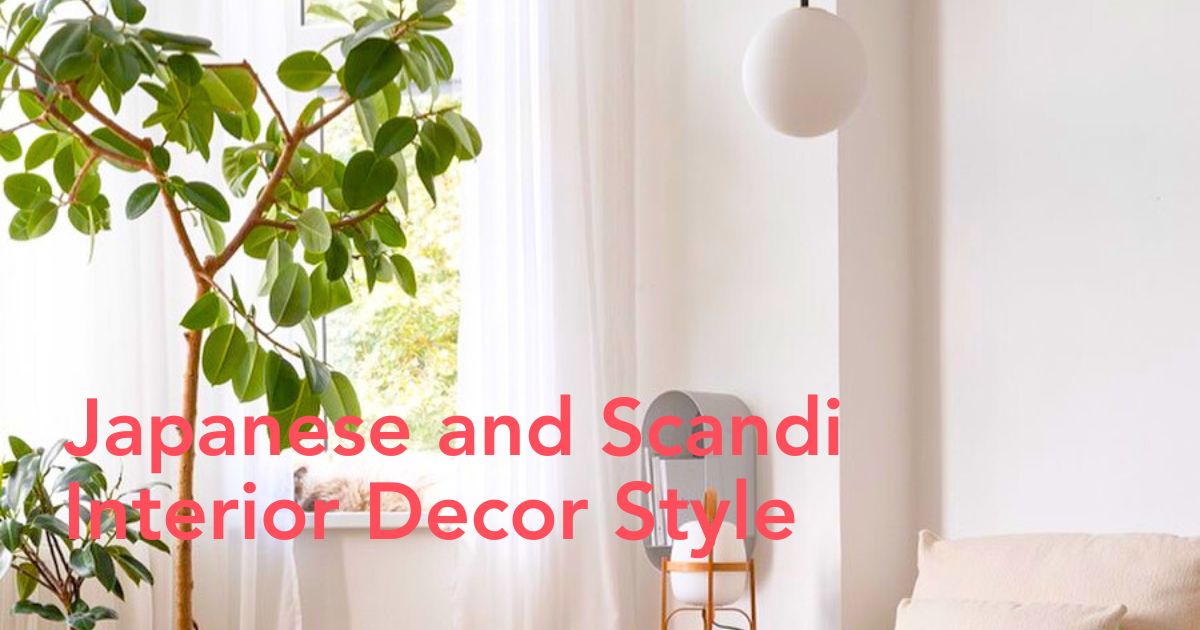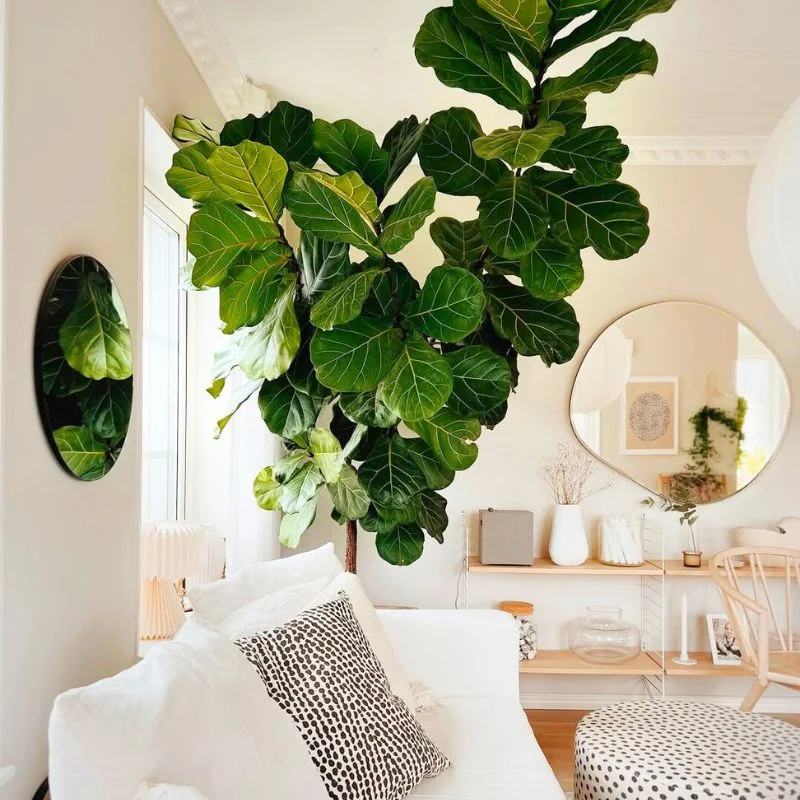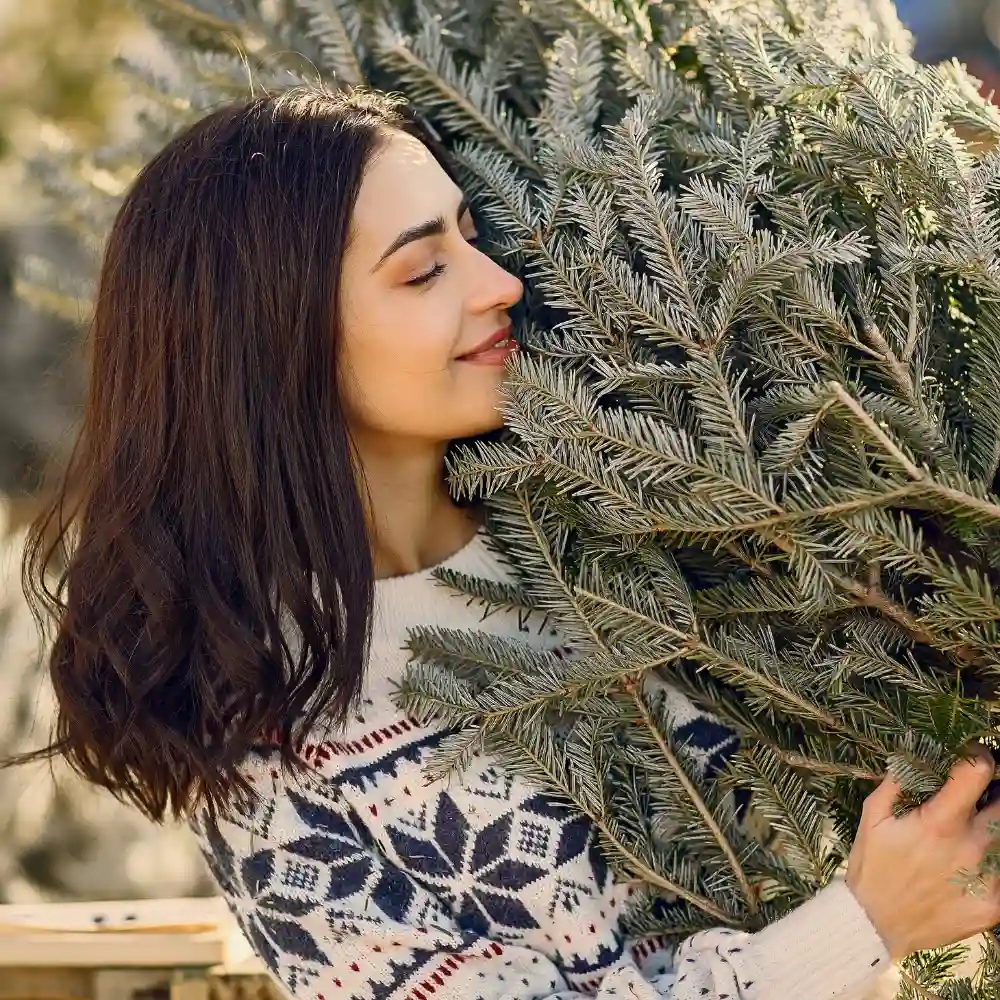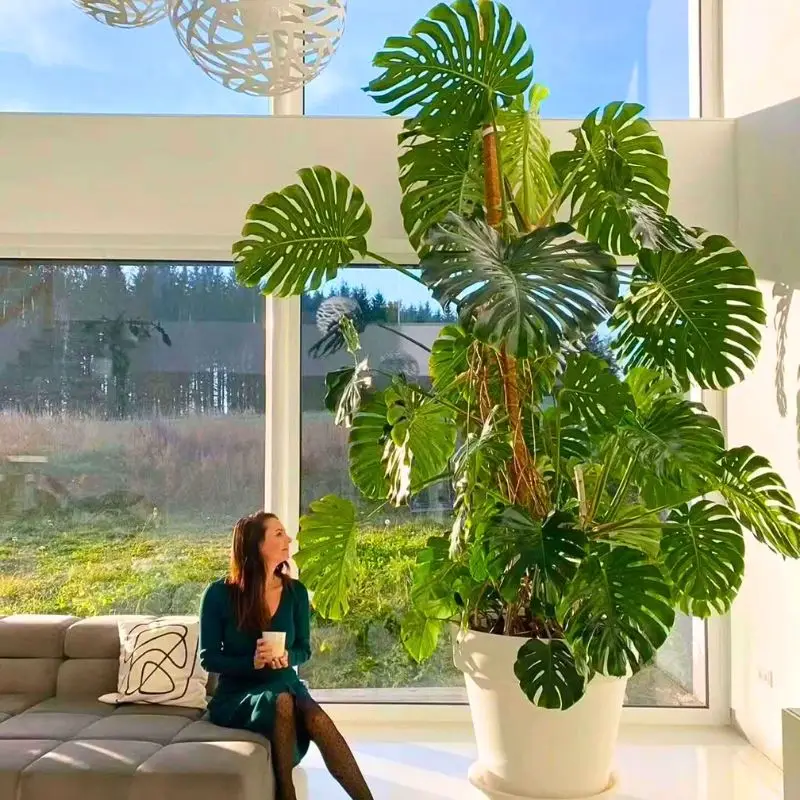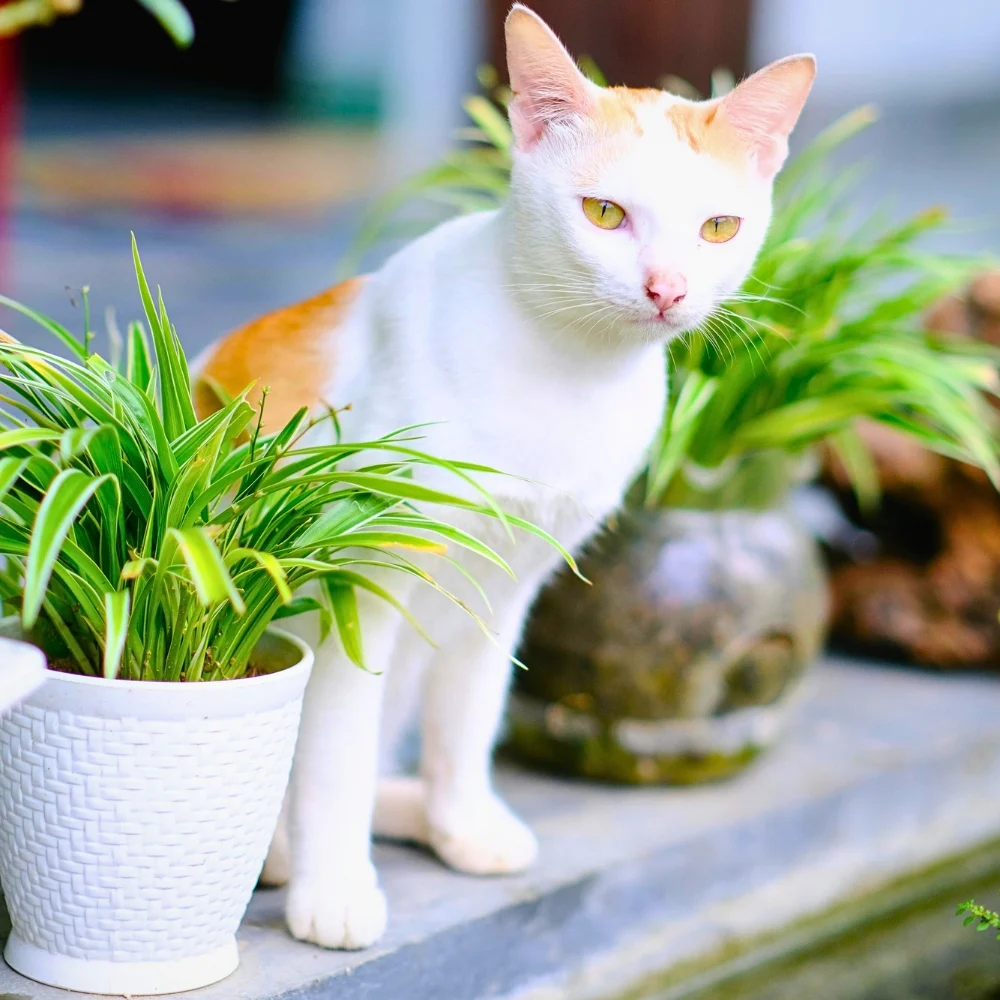In interior design, what do you get when you unite the simplicity and elegance of the Orient and the hygge of the Occident? Well, you’d get Japandi, a concept that presents a harmonious fusion of Japanese and Scandinavian styles. This design trend expresses minimalism, natural materials, and a balanced aesthetic to create serene and relaxing living spaces.
Japandi can be defined as a blend of Japanese artistic elements and wabi-sabi philosophy with Scandinavian comfort and coziness in design. One way to incorporate its aesthetics into interior design is through a careful selection of houseplants to use to idyllically bring out the true aesthetics of this concept. In this article, you'll learn more about 10 Japandi plants that are ideal for this type of design.
What Is the Concept of Japandi and Its Origins?
In its simple terms, Japandi aesthetic represents the marriage of two distinct philosophies; the functionality of Scandinavian design and the elegance and Zen principles of Japanese designs. It originated as a response to the fast-paced modern world when individuals sought some peace and quiet within their living spaces.
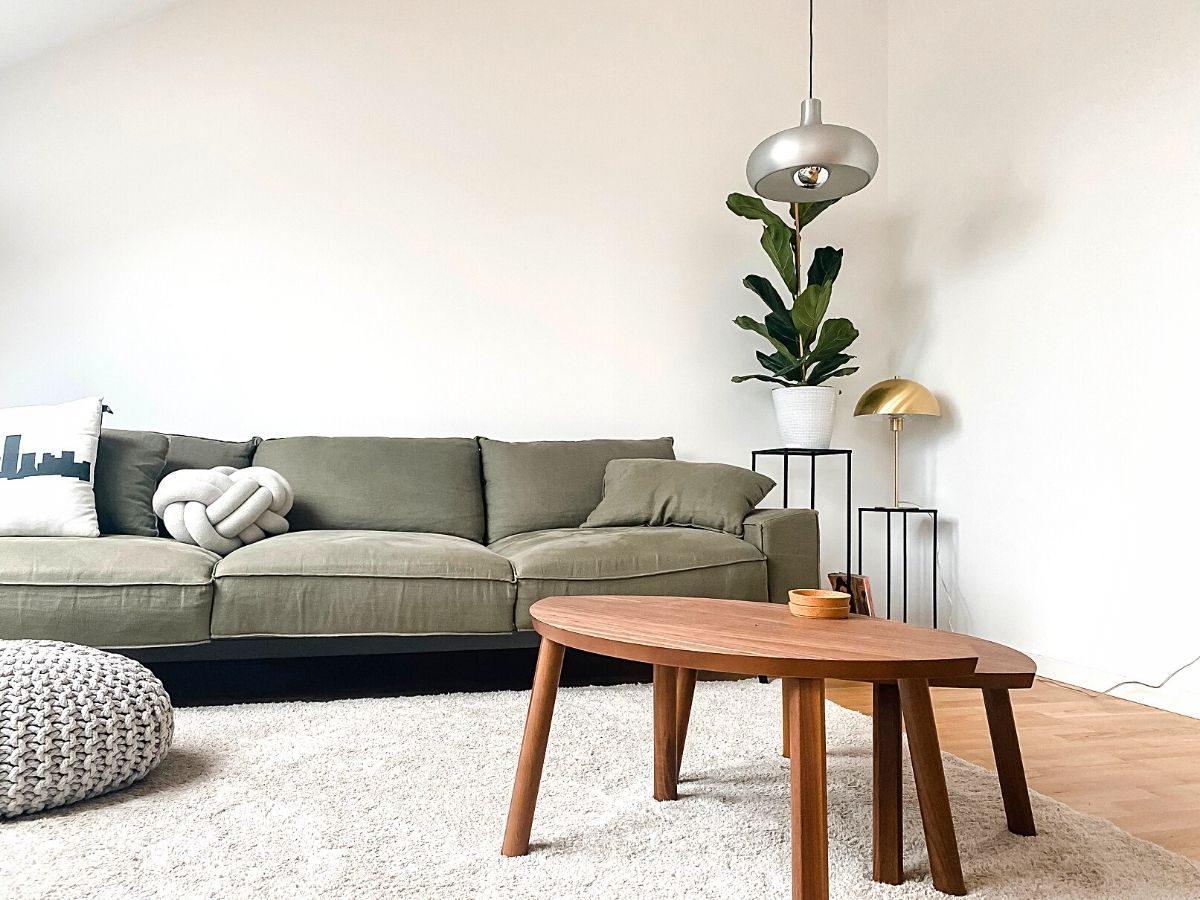
Photo by Katja Rooke
The origins and development of this idea can be traced back to the respective design philosophies of Japan and Scandinavia. Japanese design, deeply rooted in Zen Buddhism, emphasizes simplicity, harmony, and a connection with nature. Traditional Japanese interiors often feature open spaces, sliding doors (shoji), and a neutral color palette to create a calm and balanced atmosphere.
On the other hand, Scandinavian design which emerged in the early 20th century, primarily in Nordic countries such as Sweden, Norway, Denmark, and Finland sought to create functional, practical, and accessible designs. These designs exhibited quality and great work technique as well as the use of natural materials like wood, leather, stone, and textiles. The interiors are characterized by their minimalist aesthetics, functionality, cozy elements, light color palettes, and a strong focus on creating warm and inviting spaces.
As the convergence of these two design philosophies began to take shape they explored how simplicity, functionality, and a connection with nature could create a sense of calm and harmony within living spaces.
The term 'Japandi' is itself a portmanteau, combining 'Japan' and 'Scandi', which arose as a way to define this blending of styles. It was developed sometime in the mid-1800s and gradually and organically developed over the years. It, however, gained significant recognition and popularity in the design world during the 2010s.
Its Consequent Development
Japandi design found its initial footing in Japan, where the principles of Zen and minimalism have long influenced the country's aesthetics. The concept of wabi-sabi, which celebrates imperfection and the beauty of natural aging, is deeply entrenched in Japanese culture and influenced its design principles. As it gained traction, Japandi began to find resonance in Scandinavian design traditions. Designers and homeowners in Scandinavia started incorporating elements inspired by Japanese design, such as clean lines, and minimalism into their interiors.
The resultant interiors feature a balance between minimalism and warmth, a neutral color palette, natural materials, and a sense of quiet. This fusion of designs allowed individuals to create pleasant environments that promote well-being and a mindful lifestyle.
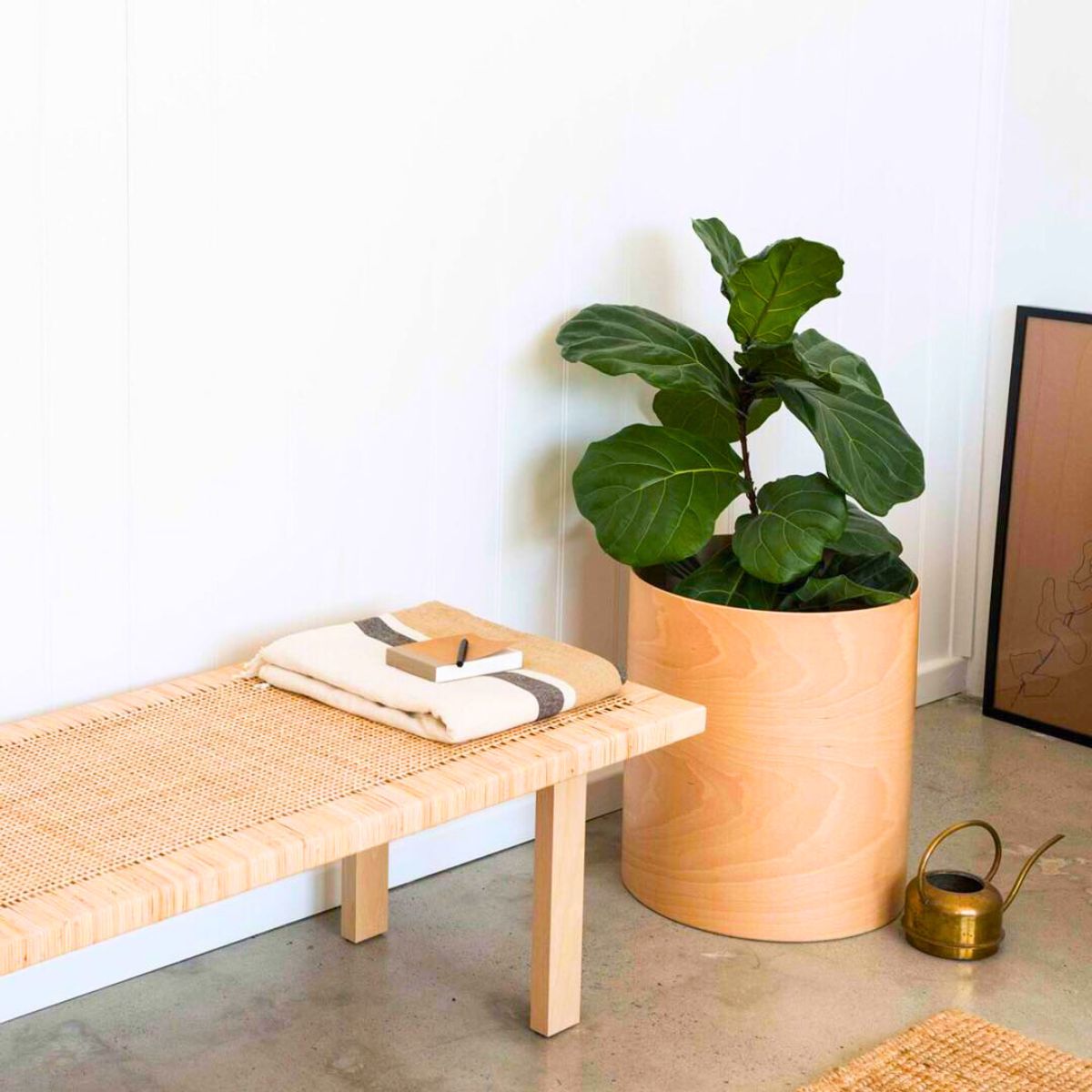
Photo: @plyroom
10 Ideal Houseplants for Japandi Aesthetics
Noteworthy is that plants and flowers play a crucial role in enhancing the serenity, tranquility, and overall mental well-being that comes with this design concept. So, here are eight houseplants that would be ideal for creating the perfect Japandi aesthetics in your interior spaces.
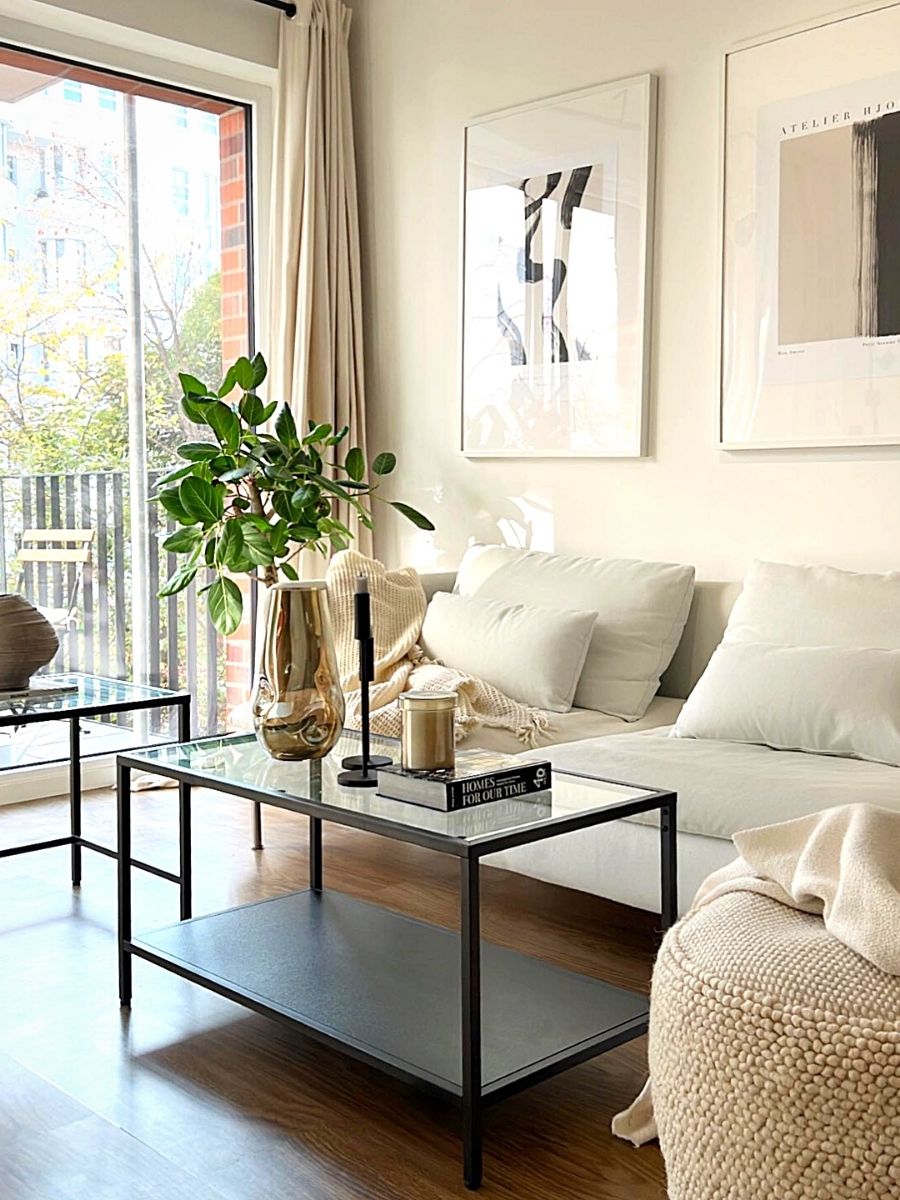
Photo: @japandi_interiors
Ficus Benjamina
Ficus benjamina, also known as the Weeping Fig, is an ideal choice for Japandi interiors due to its natural elegance and adaptable form. Its slender trunk and cascading, gently arching branches create a soft, organic flow that complements Japandi’s balance between structure and fluidity. The leaves bring a sense of understated beauty without overwhelming a space, making it perfect for minimalist interiors. As a resilient, air-purifying plant, it aligns with the Japandi philosophy of functionality and harmony with nature.
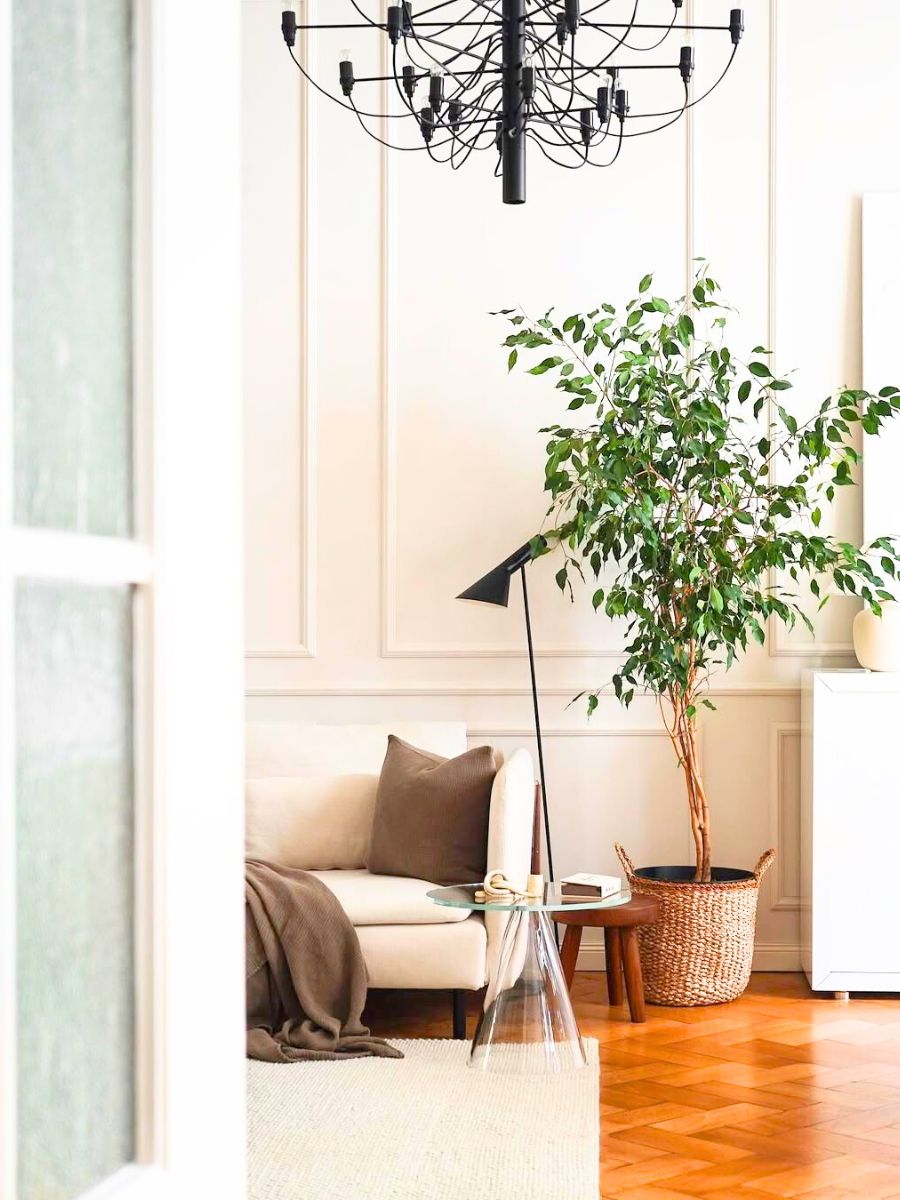
Cast Iron Plant (Aspidistra Elatior)
The Aspidistra elatior, commonly known as the cast iron plant, is an ideal choice for Japandi interiors. It has glossy leaves that bring a dash of nature indoors while requiring minimal care. This plant thrives in low-light conditions, making it suitable for areas with limited natural light. Its qualities align perfectly with the minimalistic and low-maintenance aspects of the Japandi aesthetic.
To suitably incorporate the cast iron plant into your Japandi design, place it in a simple ceramic pot with clean lines. Position it in the Japandi-inspired interior in areas that can benefit from a touch of greenery without overwhelming the space. For example, you can have it in a corner, on a shelf, or on a minimalist side table.
The cast iron plant's upright growth habit and dense foliage create a remarkable visual presence while maintaining the clean and uncluttered look that is characteristic of Japandi design, without subduing the other elements of the design.

Photo: @indoorplantfamily
Fiddle Leaf Fig (Ficus Lyrata)
The Fiddle leaf fig is a popular choice among interior designers, and its presence can certainly enhance a Japandi-inspired space. Its large, violin-shaped leaves create a visually interesting focal point, while its green color adds life to the room.
Basically, with its large, glossy leaves and sculptural shape, the Fiddle leaf fig adds an elegant touch of nature's grandeur to Japandi interiors. It provides a dynamic attraction while maintaining a sense of minimalism.
To incorporate this houseplant in Japandi interior design, opt for a simple, Scandinavian-style planter in neutral tones. Place it near a window to provide ample natural light, and allow its leaves to breathe freely, giving the room a sense of vitality. This allows it to thrive and subtly serve as a centerpiece in your Japandi design.
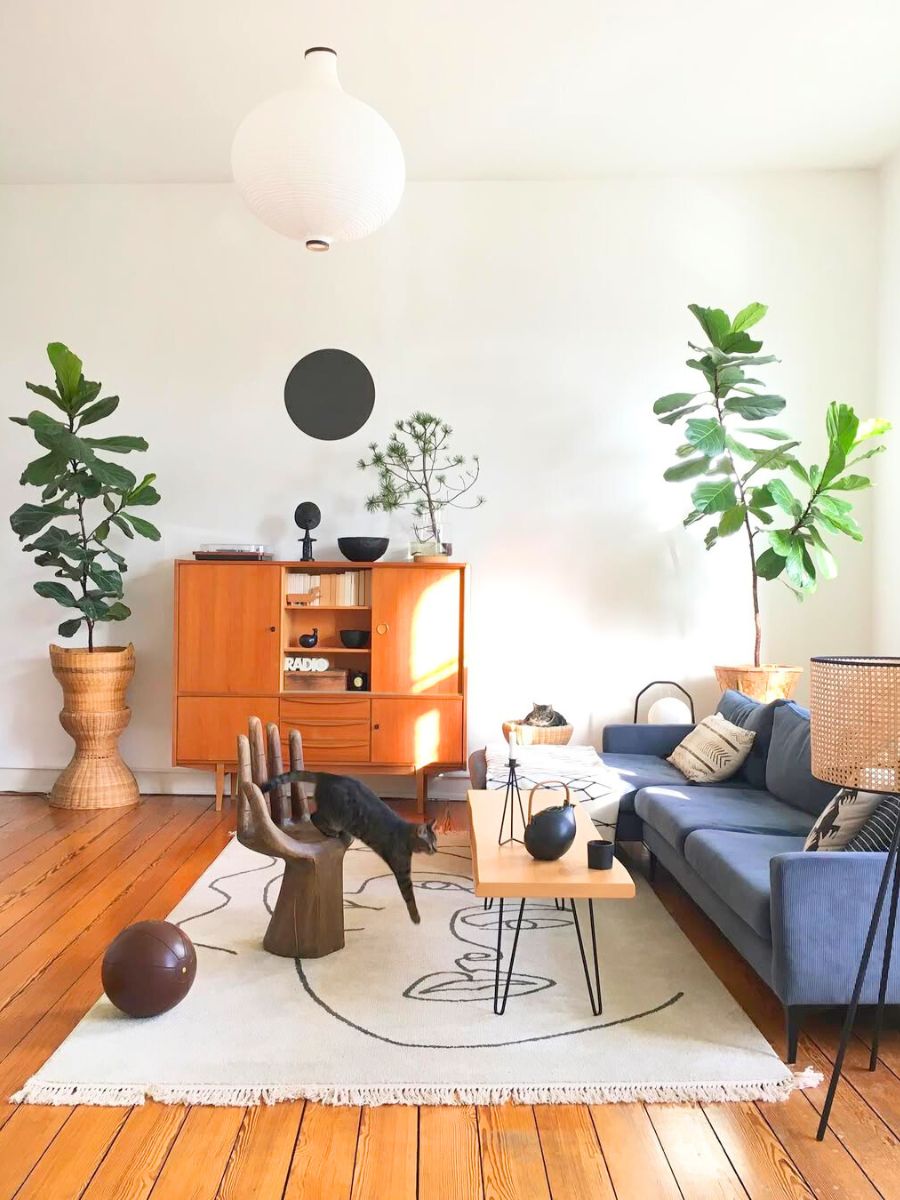
Chinese Money Plant (Pilea Peperomioides)
This plant has distinct round leaves on upright stems that make it a delightful addition to a Japandi-inspired interior. The Chinese money plant symbolizes good fortune and is also often associated with positive energy. The symbolism aligns with the values of mindfulness and balance found in both Japanese and Scandinavian designs.
Also known as 'Pilea', the plant’s clean lines and uncluttered appearance also make it a natural fit for Japandi aesthetics, plus its simple yet attention-catching foliage balances the minimalist nature of both design philosophies. Moreover, the houseplant is relatively low-maintenance, making it a practical choice in line with Scandinavian functionality. It doesn't require extensive care and is hence suitable for busy lifestyles while maintaining the unpretentious nature of Scandinavian design.
To incorporate Pilea peperomioides into a Japandi design, place it in a simple, ceramic pot. One can also opt for a simple, neutral-toned pot or planter that complements the Japandi color palette. The choice of this plant maintains the clean, uncluttered lines that are essential to the design’s aesthetic and in addition, its compact size makes it suitable for side tables, shelves, or as part of a plant arrangement.
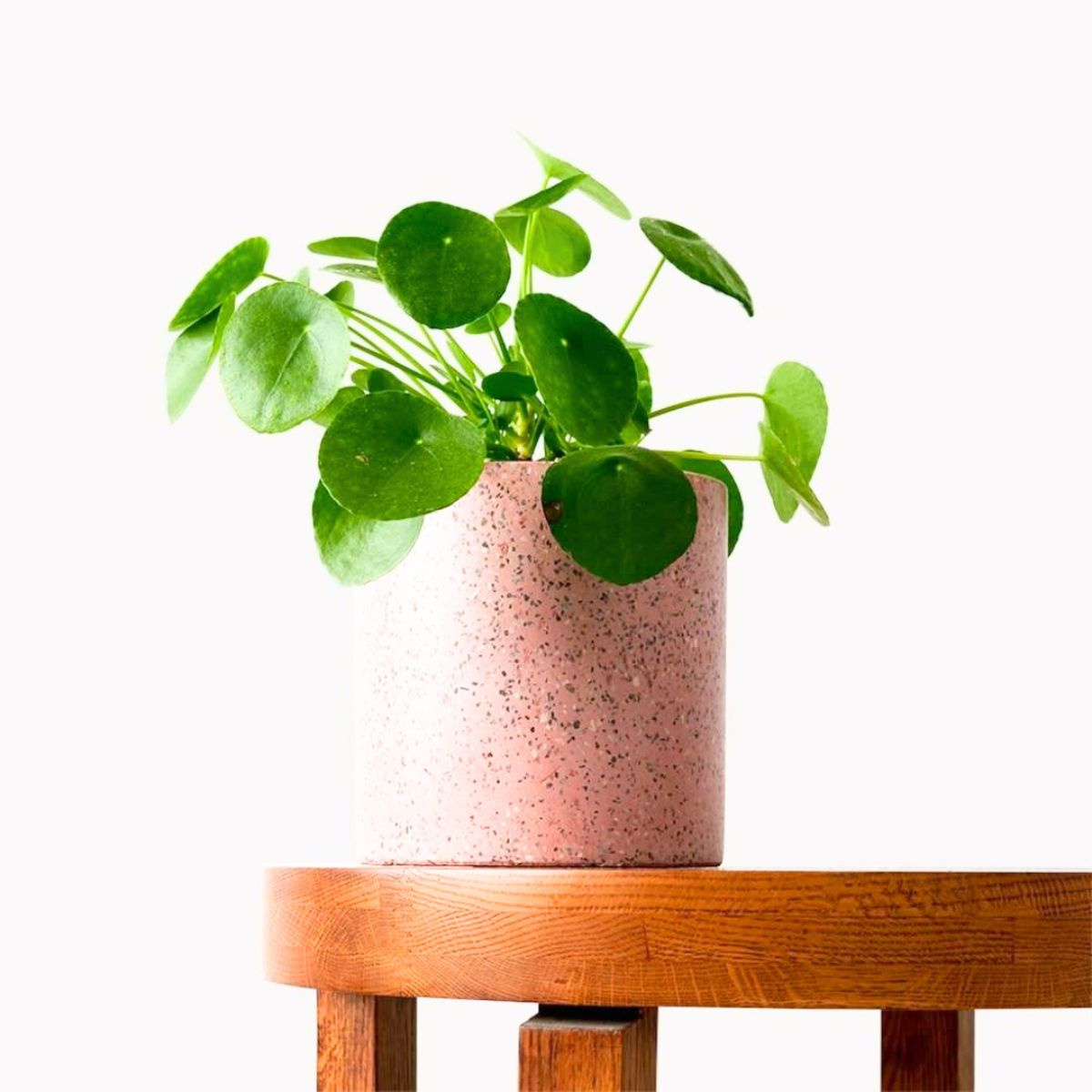
Olive Tree (Olea Europaea)
The olive tree is an ideal choice for Japandi interiors, offering a refined yet understated presence. Its branches and muted green leaves introduce a natural, airy quality that aligns with this type of design's focus on harmony and simplicity. This tree thrives in bright, open spaces, complementing the soft, neutral tones and organic materials often used in this design style. Beyond aesthetics, the olive tree symbolizes resilience and tranquility, reinforcing the balanced and intentional atmosphere that Japandi interiors strive to create.
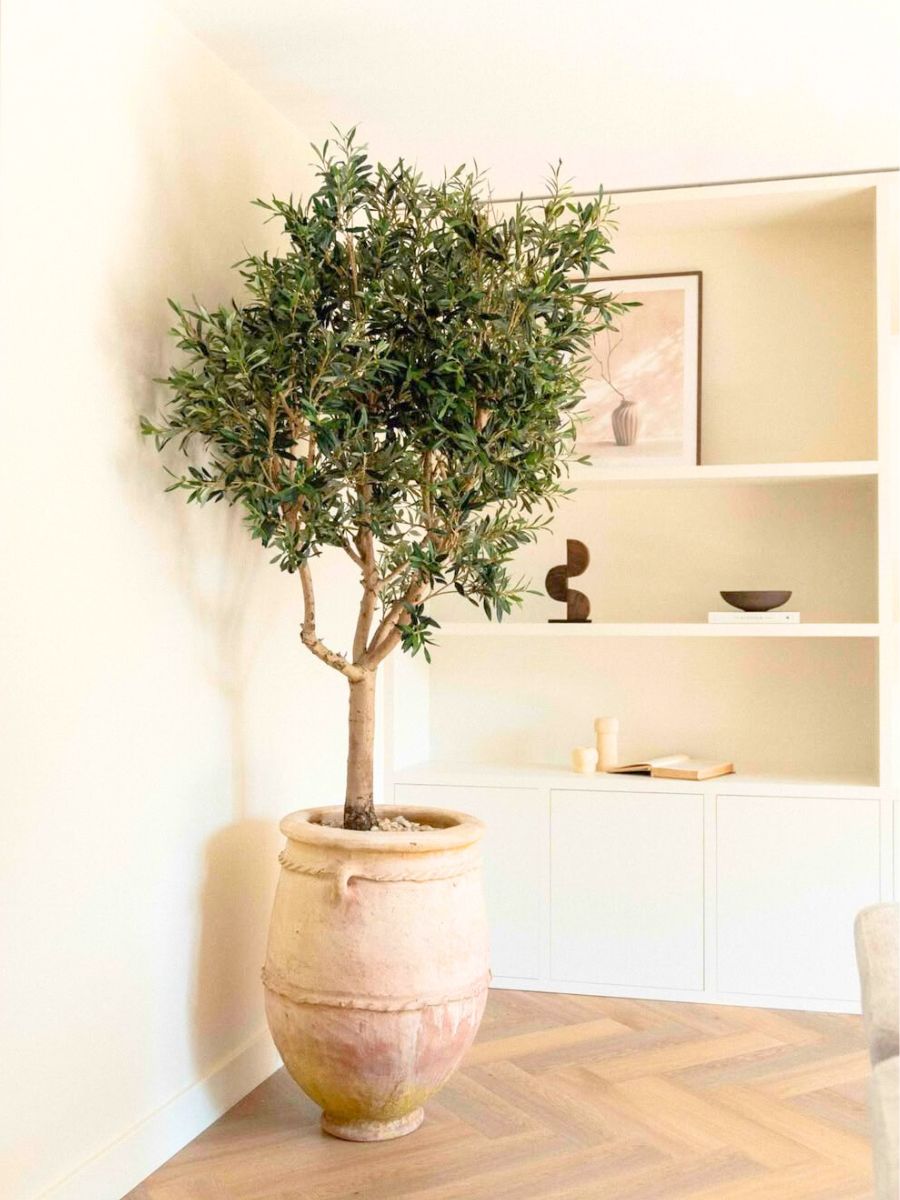
Photo: @roets.nl
ZZ Plant (Zamioculcas Zamiifolia)
ZZ is a resilient houseplant that perfectly aligns with the Japandi aesthetic. Its shiny, dark green leaves enhance any space. This plant is known for its ability to tolerate neglect and low-light conditions, making it an excellent choice for busy individuals or rooms with limited sunlight.
It can be integrated into Japandi design by placing it in a minimalist, white ceramic pot. Its upright growth habit makes it suitable for corners or as a statement piece on a side table. The plant can also be placed on shelves, adding depth and texture to the design.
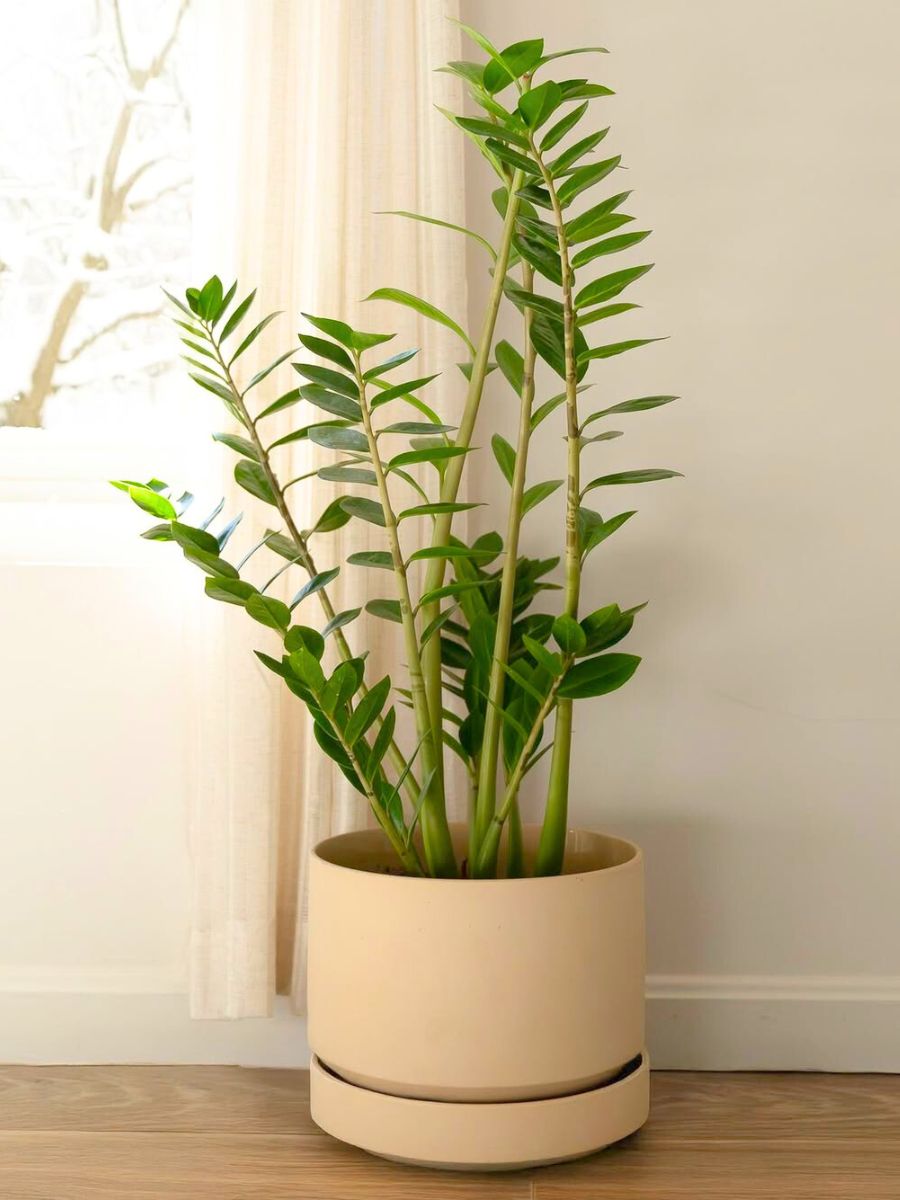
Photo: @lbe.design
Succulents
With their diverse shapes and low-maintenance nature, succulents are an excellent choice for enhancing the Japandi aesthetic in interior design. These hardy and visually appealing plants align flawlessly with the principles of Japanese minimalism and Scandinavian functionality that define Japandi. This makes them a perfect addition to this design concept.
Succulents come in various shapes, sizes, and colors, making them inherently attractive, and their sculptural quality adds visual interest and complexity to a space while maintaining the simplicity and balance of Japandi design ideals. These plants are known for their resilience and low-maintenance requirements which perfectly fit with the practicality and functionality aspects of Scandinavian design.
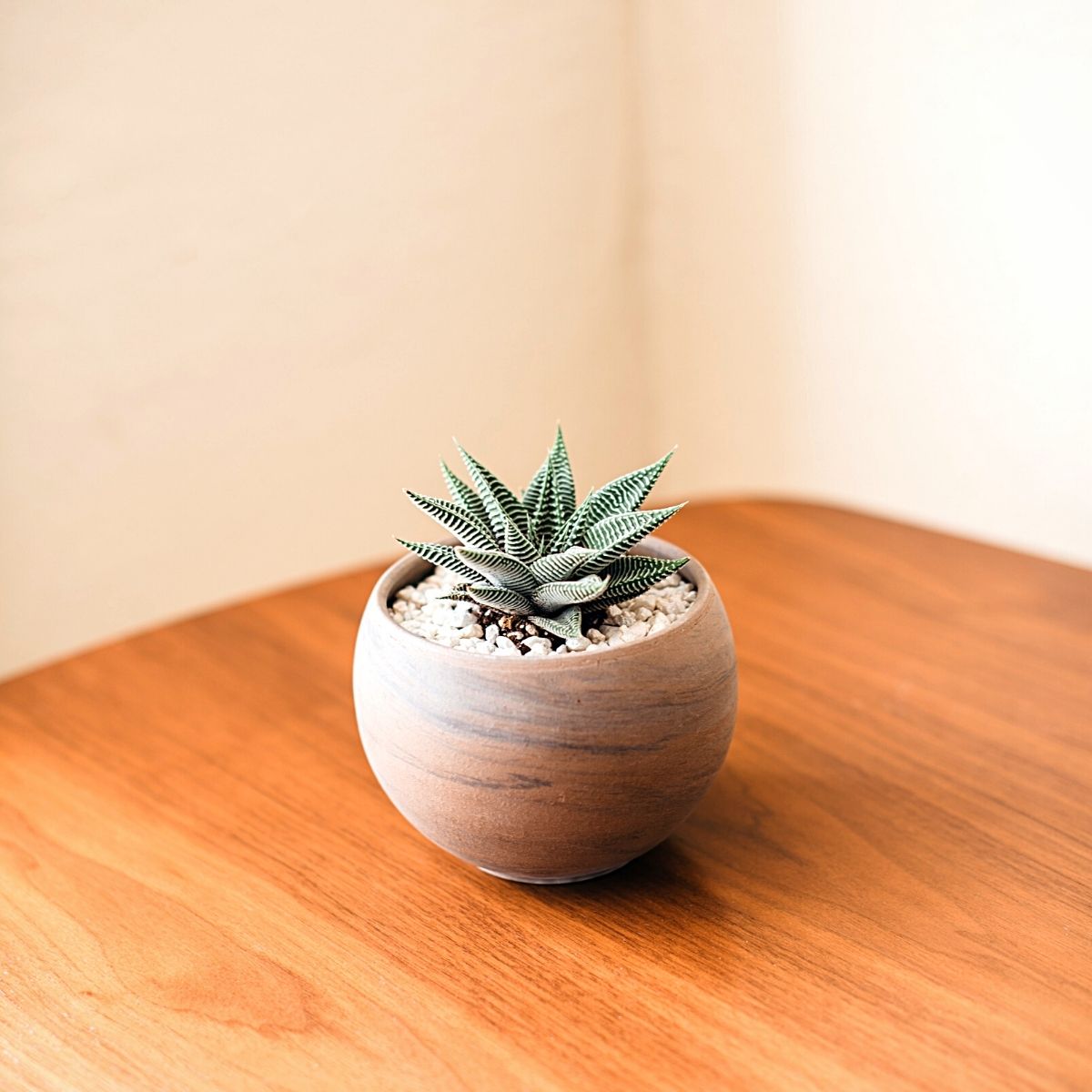
Photo: Jeremy Lwanga
They foster a connection to nature, which is essential in this type of design. The presence of succulents brings a bit of the outdoors inside, promoting well-being. Many succulents, such as aloe vera, also have air-purifying properties, which align with the emphasis on well-being in Japandi design. Clean indoor air contributes to overall comfort.
What’s more, they can be creatively arranged in various containers, from minimalist pots to geometric planters, offering flexibility in design and allowing you to create compositions that suit your Japandi space.
These plants can be positioned on shelves, windowsills, or as tabletop centerpieces. The diverse shapes and colors of different succulent varieties allow you to create interesting and balanced arrangements. One may opt for simple, neutral-toned pots or planters that complement the Japandi color palette and design aesthetic. The container should enhance the clean lines and simplicity of your interior.
One can also create groupings of succulents or combine them with other Japandi houseplants and design elements that maintain simplicity. Mindfulness in their arrangement is essential, ensuring that each element in the Japandi interior serves a purpose and contributes to the overall sense of calm and balance. Also, avoid overcrowding to maintain simplicity.
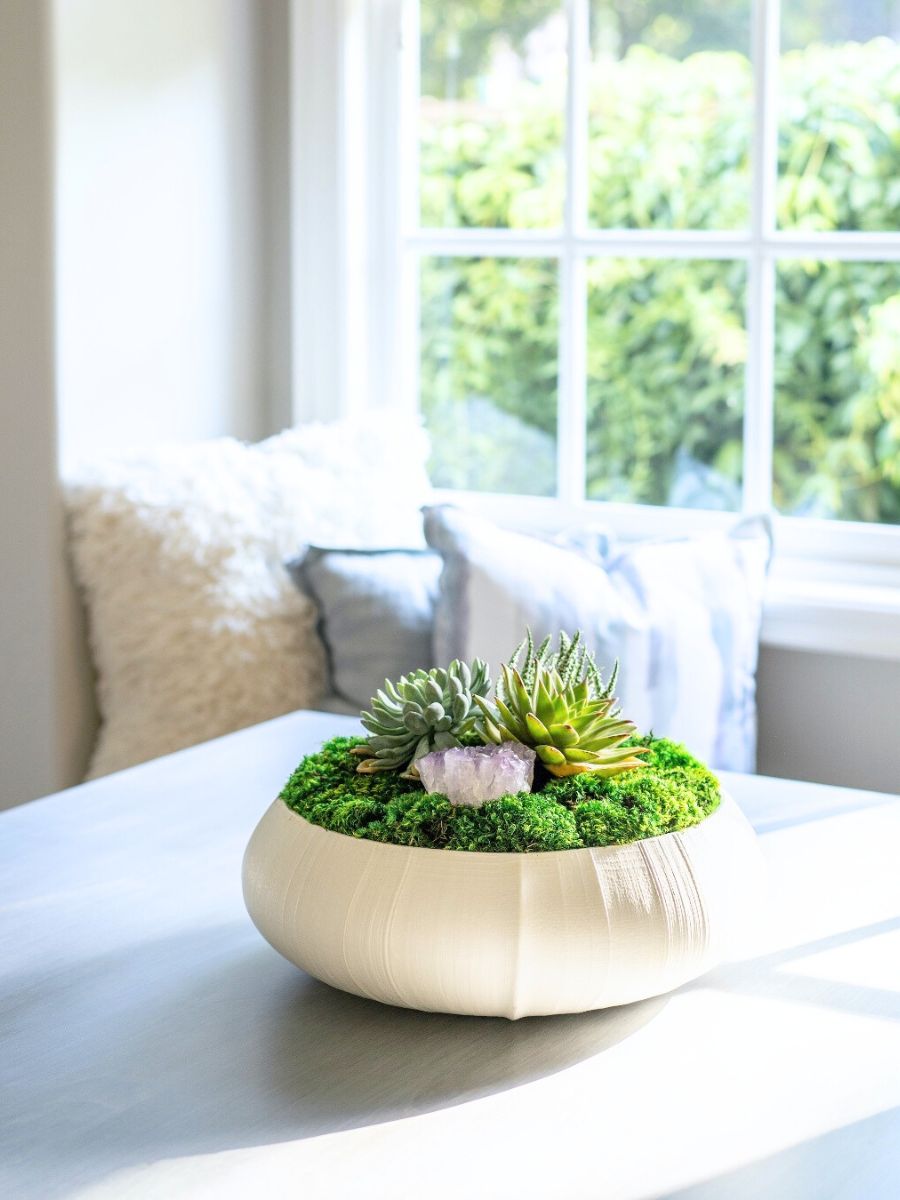
Cornstalk Dracaena (Dracaena Fragrans)
The Cornstalk Dracaena is renowned for its tall, slender, and vertical growth. This plant's arresting appearance, thus, adds a dash of elegance to any space, making it one of the 10 Japandi plants to incorporate into your interiors. The plant has green foliage which brings a sense of nature into the living space, a key element in the aesthetic. Its leaves symbolize the Japanese reverence for nature and stimulate tranquility and well-being. They also create a sense of serene movement, while their air-purifying qualities contribute to a healthier living environment.
Much like the other houseplants suitable for this type of design, Cornstalk Dracaena is relatively low-maintenance, fitting perfectly with the practicality and functionality aspects of Scandinavian design. One can use the plant in a simple, tall cylindrical pot in neutral tones and position it near windows or as a divider between spaces, allowing its graceful leaves to add a vertical element to the room.
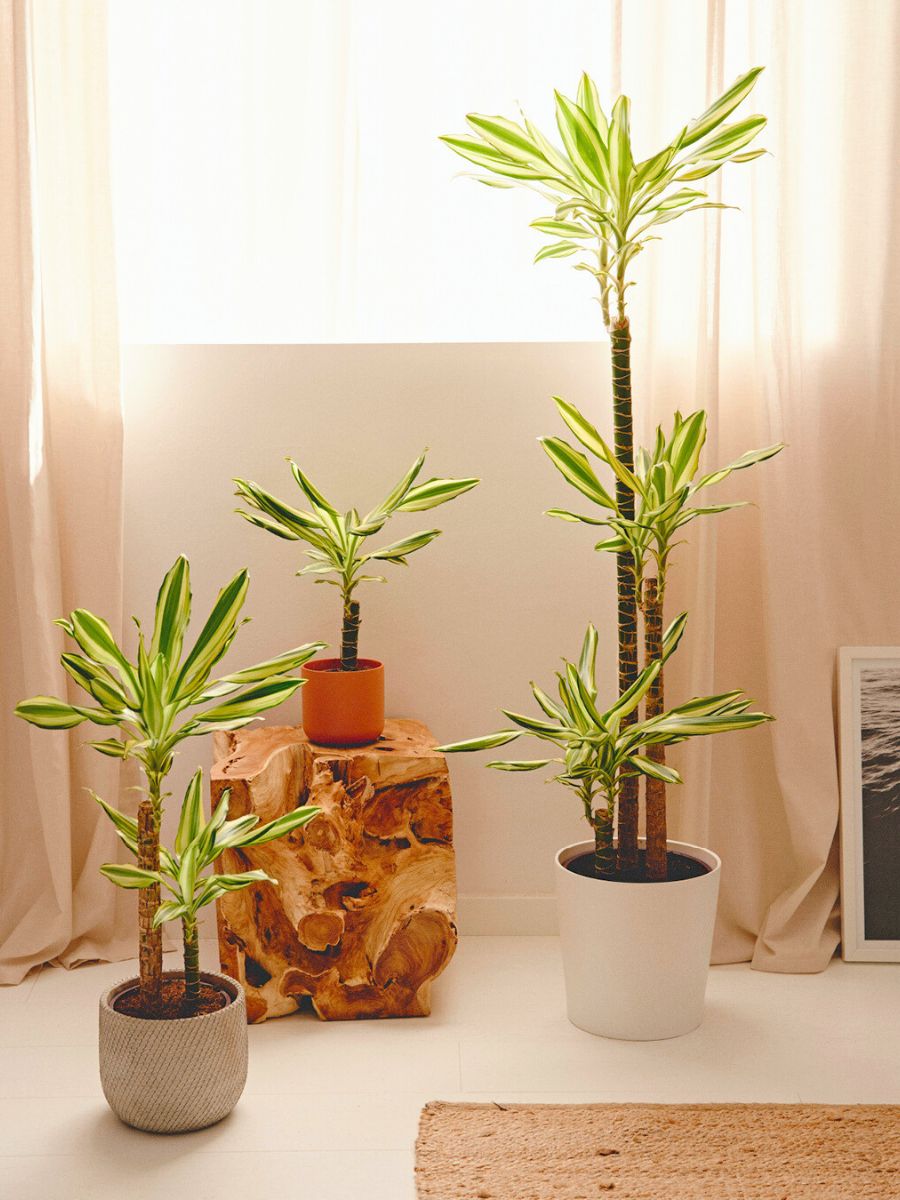
Heartleaf Philodendron (Philodendron Scandens)
Featuring heart-shaped, cascading leaves that add a hint of gentleness and grace to the Japandi interior, the Heartleaf Philodendron is a versatile plant that complements the clean lines and minimalist aesthetic characteristic of this design.
This plant is adaptable and can be placed in various ways, from hanging baskets to shelves or tabletops. Its flexibility allows for ideal incorporation into interior spaces, achieving balance and visual interest. The verdant leaves also symbolize Japanese appreciation of nature.
Being low-maintenance, and requiring minimal care and attention also aligns this plant with the practicality and functionality aspects of the design. Integrating it into the design involves hanging it in a minimalist macramé hanger near a window or letting it trail along open shelves.
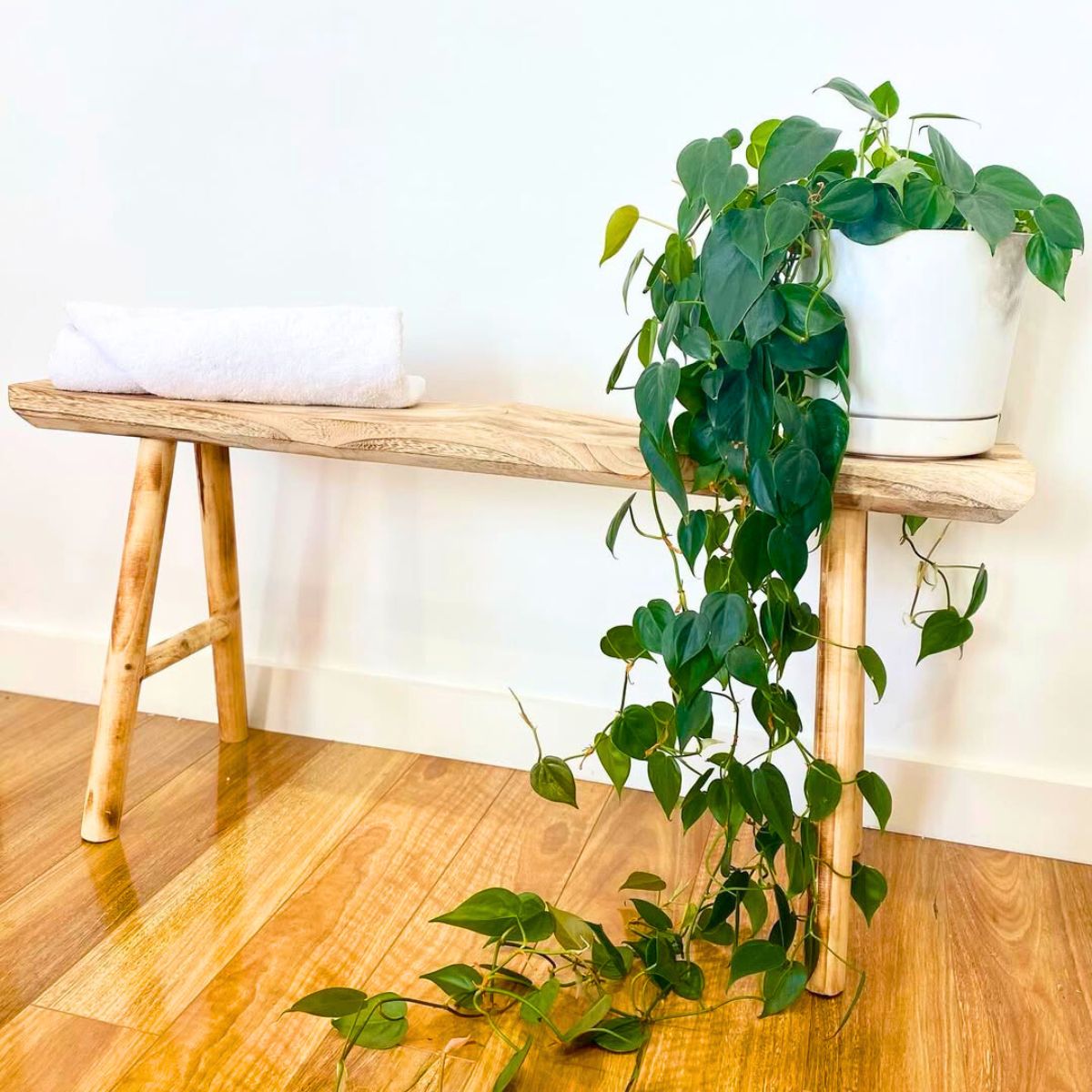
Photo: @a_little_leafy_
Peace Lily (Spathiphyllum)
Incorporating the Peace Lily into your Japandi interior design can enhance the serene and minimalist aesthetic characteristic of this style. The Peace Lily features white flowers embodying simplicity and clean beauty. Its clean lines and understated appearance make it an ideal choice for Japandi spaces, where it can serve as a subtle focal point without overwhelming the decor.
Additionally, the Peace Lily is known for its air-purifying qualities, contributing to a healthier indoor environment. Its low-maintenance nature aligns with the functional aspect of Japandi design, requiring minimal care while providing maximum aesthetic benefit. Placing a Peace Lily in a neutral-toned, minimalist planter can smoothly integrate it into your Japandi-inspired space.
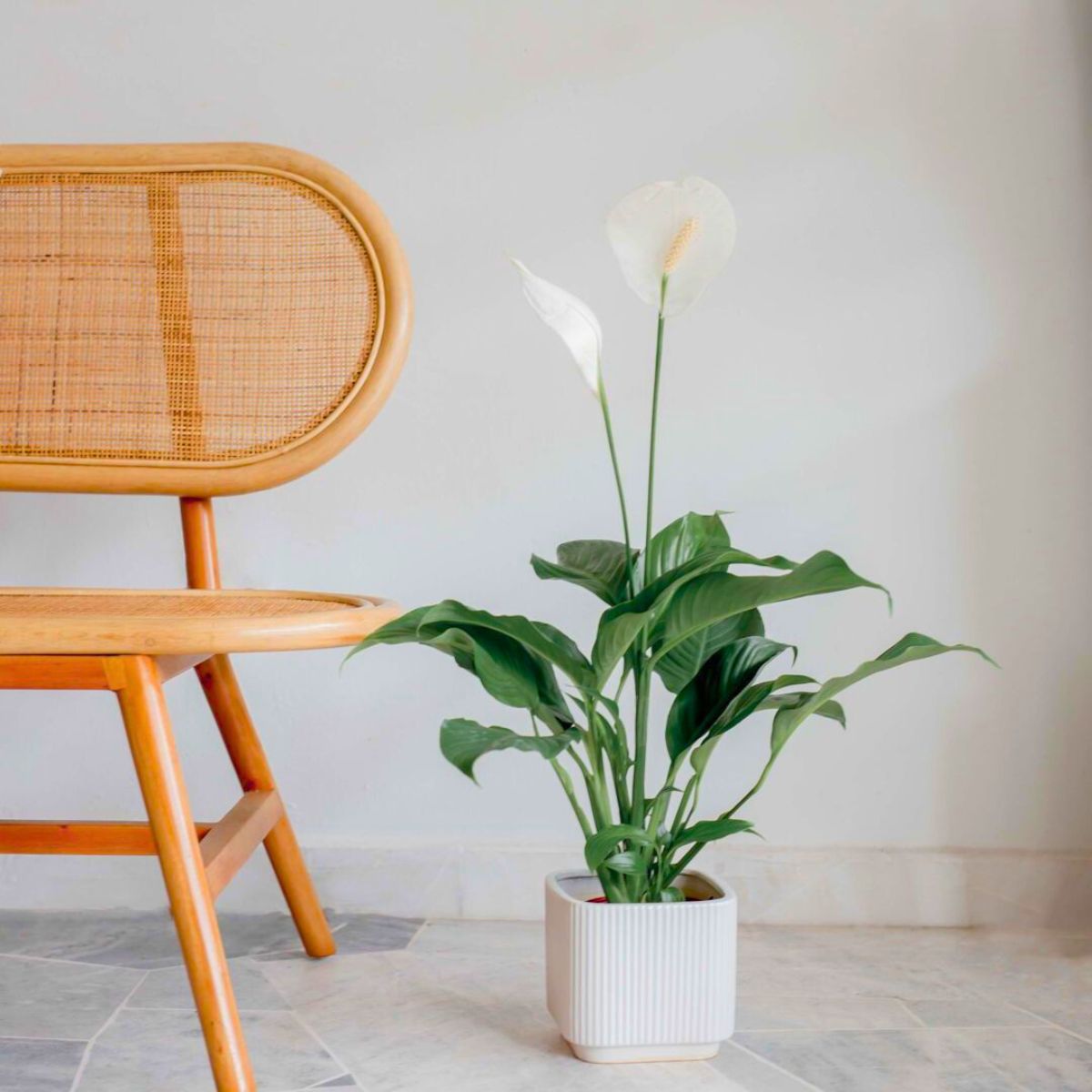
Photo: @plnt.co
What Are the Benefits of Plants in Japandi Designs?
Japandi aesthetics isn't just about looks but also promotes well-being. The minimalist and balanced approach, for instance, promotes a sense of calm, creating a peaceful space within homes. The integration of houseplants further enhances these benefits.
Many of the select houseplants are known for their air-purifying qualities. They help remove toxins and increase oxygen levels, creating a healthier indoor environment. The snake plant for example is also a very good de-humidifier when placed in your bathroom.
Also, the presence of nature and greenery has been proven to reduce stress levels and encourage relaxation. The carefully chosen houseplants in Japandi design contribute to a relaxing air, allowing occupants to unwind and find solace within the living spaces.
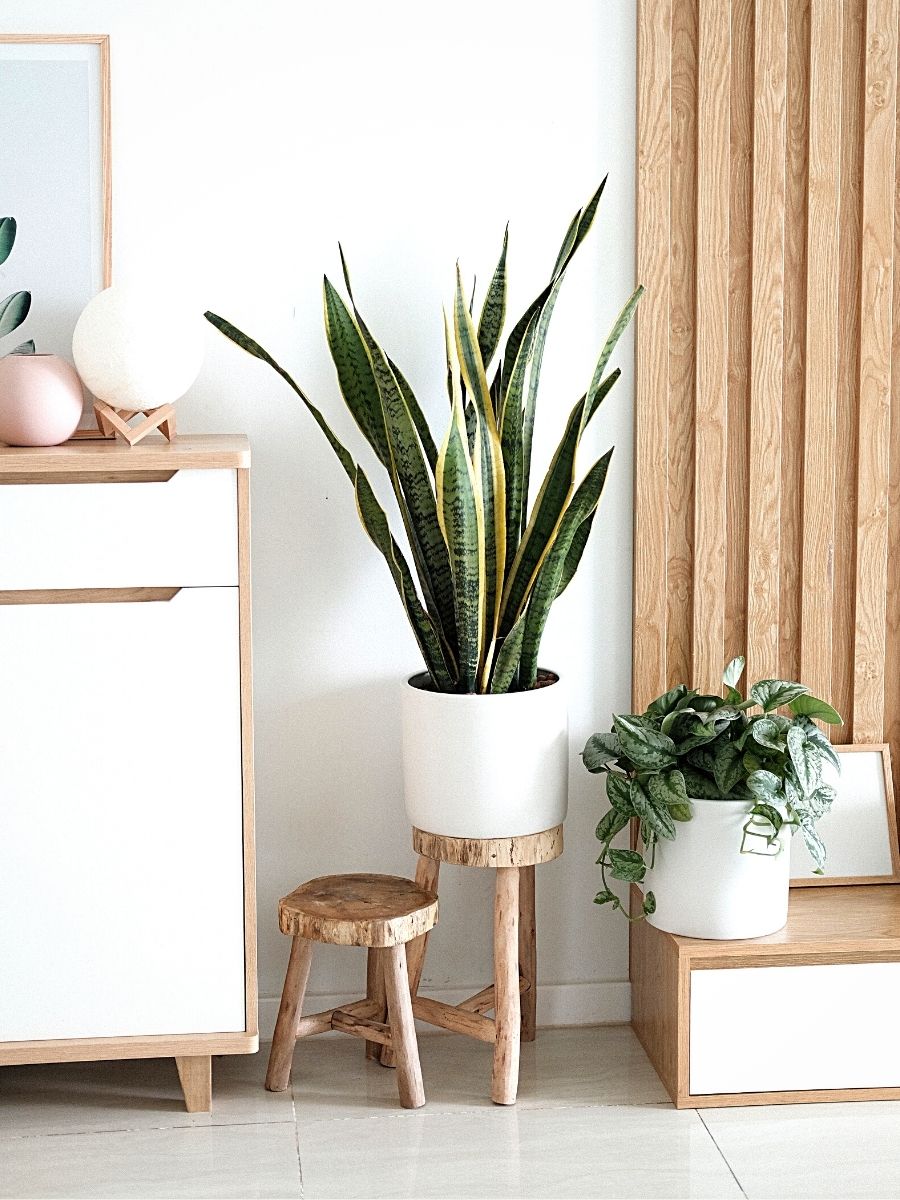
Photo by Minh Pham
Likewise, studies show that exposure to natural elements, including indoor plants, can boost mood and productivity. Japandi concept’s incorporation of houseplants creates an environment that nurtures a positive mindset and inspires focus and creativity. So, why not try this design concept, introducing these houseplants for a more rewarding experience?
Feature image by Minh Pham, header image by Claudia Schmalz

